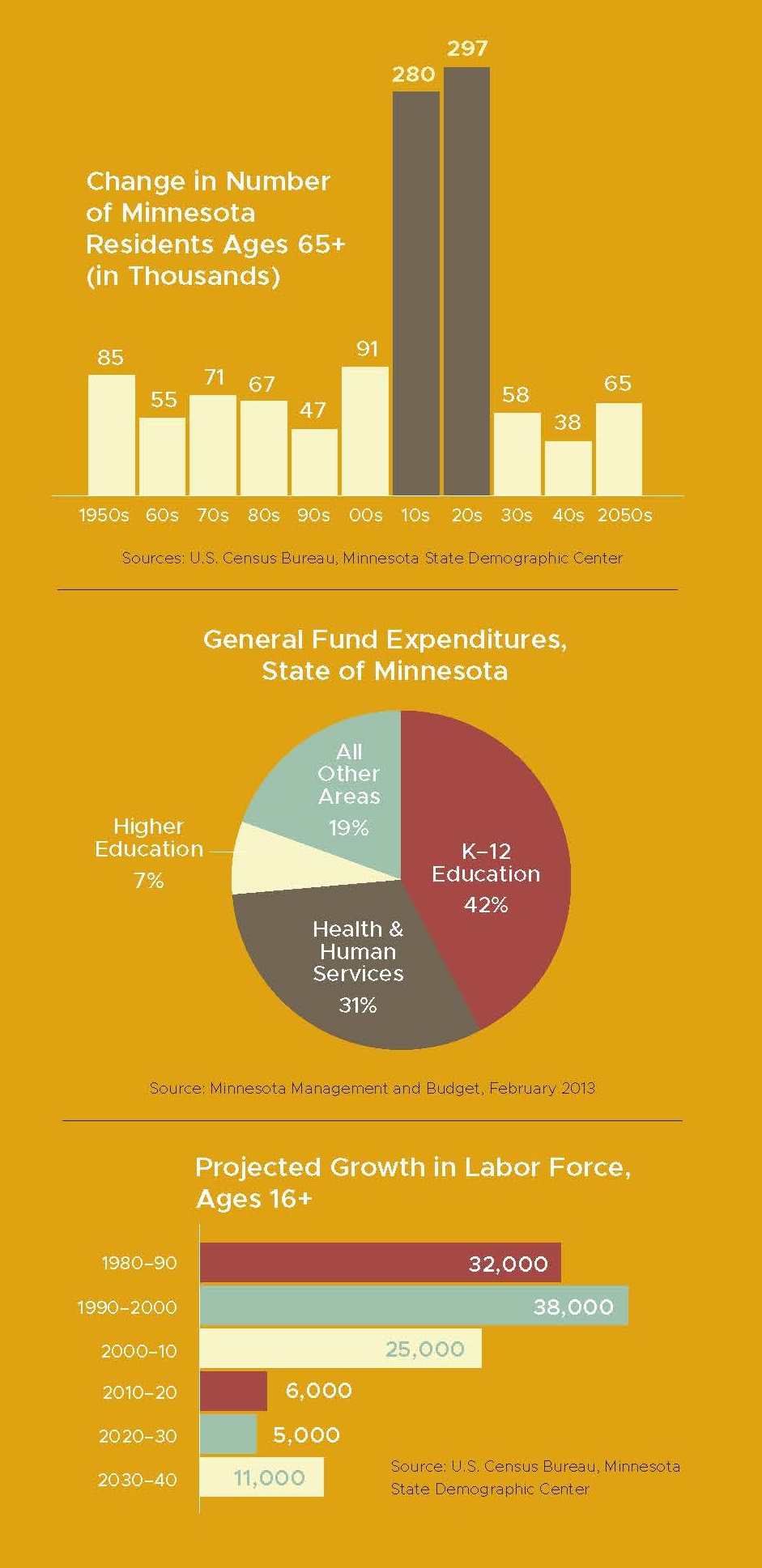As Minnesota’s “older adult” demographic multiplies, innovation is needed to address the opportunities and challenges
Public dialogue around immigration rates, insurance costs, and educational trends too often fails to factor in the aging of America. According to the Population Reference Bureau, a private nonprofit funded in part by the United States Census Bureau, the number of people 65 and older is projected to more than double from 46 million today to over 98 million by 2060, and their share of the total population will rise from 15 percent to 24 percent. In Minnesota, this trend is taking place at the same time that the growth in the labor force—a key ingredient for economic growth—has dropped to almost zero. In part, this is because a disproportionate number of young people in the Midwest are moving to work and go to school elsewhere, and they’re not returning in sufficient numbers.
This unprecedented demographic shift will have an impact on all levels of public policy, from Social Security and Medicare to employment retention and scholastic achievement. From a budgetary perspective, priorities will have to be reevaluated and reimagined. And to ensure that robust, bipartisan conversations take place sooner than too late, lawmakers and their constituents will require fresh, fact-driven recommendations.
Calling Home, a collaborative initiative of 11 aging-related organizations, is a proactive, intergenerational conversation starter designed to help all Minnesotans think over the challenges and opportunities that accompany later life. The League’s focus on workforce-oriented policies is aimed at making sure that as public costs increase, workers across the spectrum will be in a position to realize their full, productive potential. The data below inspires and informs this work.
Learn more about Calling Home at callinghomemn.org.
